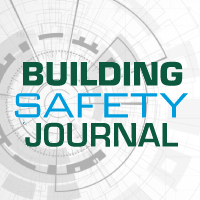
Plumbing code essentials: Testing
![]() The 2018 Code Essentials series are available as valuable companions to the 2018 International Building, Residential, Fire, Energy Conservation, Existing Building and Plumbing Codes. Aimed at all user levels — including first-time users, veteran code users and other professionals such as architects, designers and contractors — these guides use a straight-forward, focused approach to explore code requirements with non-code language, allowing readers to gain confidence in their understanding of the material and build a solid foundation for learning and applying the code’s requirements.
The 2018 Code Essentials series are available as valuable companions to the 2018 International Building, Residential, Fire, Energy Conservation, Existing Building and Plumbing Codes. Aimed at all user levels — including first-time users, veteran code users and other professionals such as architects, designers and contractors — these guides use a straight-forward, focused approach to explore code requirements with non-code language, allowing readers to gain confidence in their understanding of the material and build a solid foundation for learning and applying the code’s requirements.
2018 Plumbing Code Essentials
![]() The drain, waste and vents (DWV) system must be tested for leaks. All portions of the system must be tested prior to cover. Generally, this will involve a test of the roughed-in installation prior to enclosing the wall and floor construction, which may require being tested in phases of construction. This can be a standing water test or an air test, keeping in mind that air testing is not allowed for plastic pipe. Once construction of the building is completed and the plumbing fixtures are installed, a final inspection is required, which is a visual inspection of the DWV system sufficient to verify compliance.
The drain, waste and vents (DWV) system must be tested for leaks. All portions of the system must be tested prior to cover. Generally, this will involve a test of the roughed-in installation prior to enclosing the wall and floor construction, which may require being tested in phases of construction. This can be a standing water test or an air test, keeping in mind that air testing is not allowed for plastic pipe. Once construction of the building is completed and the plumbing fixtures are installed, a final inspection is required, which is a visual inspection of the DWV system sufficient to verify compliance.
The standing water test involves closing all openings except the highest opening. This will usually be the highest vent opening to the atmosphere, or in the case of a groundwork installation, it will be a drain or vent stack extended at least 10 feet above the portion to be tested. The system is then filled with water to the highest point for not less than 15 minutes to verify that the system is watertight at all points.
A minimum 5 psi air test is another method that can be used on material other than plastic. Again, this test must be conducted for not less than 15 minutes to verify that the system is airtight. This will require the use of a test gauge to verify the accuracy of the test. Since the required test pressure is under 10 psi, the gauge must show pressure increments of 0.10 psi or less.
Click here to read the full Code Essentials excerpt.








